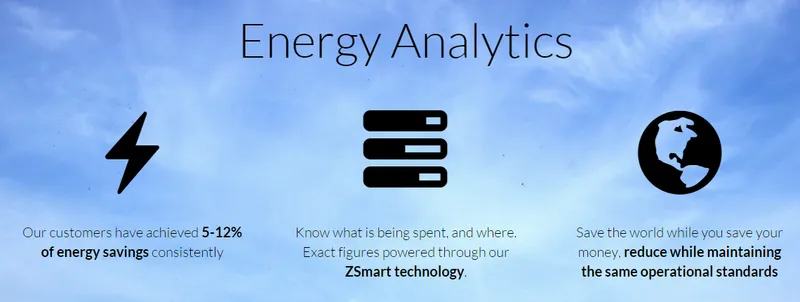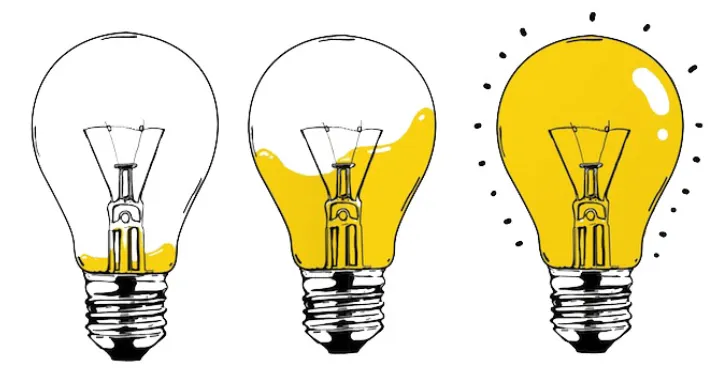The happiness of numbers. Helping environment, people, and business with big data analytics
This year, the International Energy Agency calculated that USD 80 mln are wasted in energy every year due to inefficient technology. The WWF listed power plants and cooling/heating systems among the main causes of energy waste. With a quick Google research you could probably extrapolate hundreds of more precise esteems about energy wasting but I am sure that, regardless of your results, you will come to the conclusion that the problem is serious.

Now, it is also true that there has been much mobilization around the issue. But when it comes to technology engineers are probably the best activists because they provide solutions for a broader range of interests at risk: those of the environment and those of the wallet. They not only help to safeguard nature, but also to save money.
Zenatix is an example of how big data analysis can lead the way for a more responsible usage of energy. The three founders Rahul Bhalla, Vishal Bansal and Amarjeet Singh started up in 2013, they launched their product ZenSoft in May 2014 and they already count 13 costumers.
“The three of us are batch mates from IIT Delhi and have been friends for more than 16 years. While we have pursued completely different career tracks ranging from academics to financial services and Intellectual Property services, there was a common force that drove us – Build something really big that creates an impact.
“We are passionate about big data analytics, as we strongly believe that intelligence from data can bring in efficiency and effectiveness across many industries.” Moreover, Amarjeet had collaborated with the University of California in researching about energy efficiency and this gave us a solid basis to start with.
“In India, companies providing energy related software solutions are incidentally the large hardware companies who manufacture smart meters and provide an energy management system along with. However, their primary focus is on selling the hardware and therefore, their software provide only a limited value. Some big IT companies like Cognizant andWipro have also started developing software solutions in the energy space. However, their primary focus is in the smart grid space and less on the B2B segment.”
After thinking about starting up for several years, in 2013 they launched Zenatix.
Count 'n save
“The genesis of our product was very simple - We can't improve what we don't know or can't measure.” The problem with normal bills is that they are displayed in complicated charts and reports, which are generally hard to interpret for non-experts. Consequentially, understanding how to save energy becomes quite complicated.

The most popular solutions (such as lights with CFLs or with LEDs)are very expensive. “Our product, ZenSoft, allows large consumers of electricity in the commercial/industrial sectors to understand in real time how much they are consuming at a load or machine level. Alerts can be generated in the form of SMS or email whenever the operations deviate from the benchmarks.”
Zenatix has helped customers have already been able to realize savings between 5 and 15 percent, using actionable insights from their energy analytics platform.

So how does the business work??
“We bill a monthly or annual subscription fee to our customers who are ecstatic about the fact we don't ask for lakhs of rupees upfront like retrofits providers.”
The trio has started with their own investments and quickly had thirteen costumers, which enabled them to develop and increase their business. Now, they are planning to raise capital as well as to go beyond the Delhi/NCR market which has so far been their main focus.
“We are now at a stage where we believe we are ready for the next leap, because we have qualities that differentiates us from the rest of the market.”
Some data to believe them?
- Smart meters as a percentage share of total meters installed in the country stand at 30.7% for USA, 22% for Europe, 49% for Canada, 31.6% for Australia and much less than 1% (close to zero) for India. As India gears up for smart metering deployment, which is inevitable, energy analytics software, running as a cloud service will be a big market to tap.
- Total annual billing across commercial/industrial and residential sectors in India is currently $ 60 billion. Several studies have shown that just providing the right details about consumption disaggregation (“where” and “when” is your energy getting spent) has a potential to reduce consumption by 15%. Therefore, in India, there is a potential to save approx. $ 9 billion through appropriate use of platforms such as ours. This is therefore the overall market potential for a company like ours in this segment.
- Buildings, in general, across the world are known to consume more than 40% of the total energy consumption of any country. Reducing this by 15% results in contributing to 6% of energy consumption for any country. This reduction is likely to be much higher in the Indian context because of poor infrastructure both for transmission and distribution and at the end consumer level.

American Big Bros and Indian cousins?
In the US companies such as Nest -recently acquired by Google for $1bln-and Opower do a very similar job. “If you want to draw a parallel, we are building the 'Nest for the enterprise market' on a global scale. While Nest provides energy efficiency solutions for households, we are focused on the enterprises.”
In India, however, the situation is not exactly like in the US because “it lacks free market in the utilities industry, which obstruct innovations and efficiency.” Difficulties also lay in the possibility of finding the right locations. It is easier to implement ZenSoft in office spaces and restaurant/retail chains as they tend to have uniform infrastructure across multiple facilities. But much bigger opportunities lay in manufacturing space.
But it would not be fun if it was easy! “We are planning to further improve our product by allowing the electrical loads based on intelligent analytics.” Perspectives of growth also come from the market which promisingly is becoming more addressable with the entry of micro-generators (mostly renewables) and provision of buying power through energy exchanges. “We believe that our product will allow each of these entities to become more efficient.”
And we will make them happy
We believe any large consumer of electricity can benefit from our product. We currently have customers in sectors such as manufacturing units, college campuses, IT offices and buildings.

Last, but definitively not least, there are over 1.4 billion people globally who still do not have access to electricity. “We realized that eliminating such wastage even with one customer can potentially help power many villages in India. This was one incident that reinforced our belief of driving a change with our business.”







